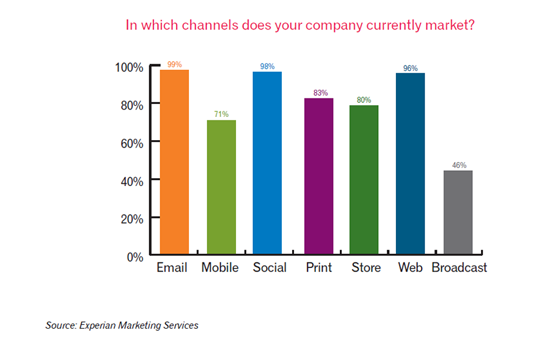What's the Frequency?

By Peter Prestipino, Editor-In-Chief
Email is the virtual workhorse of digital marketing and every Web worker knows it.
According to the Experian Marketing Services' "2013 Email Market Study," 99 percent of those surveyed say that their company currently uses email. While marketers consider email a highly effective practice, many don't consider customers' email preferences - and that's a significant problem. For instance, 60 percent of marketers don't offer customers the opportunity to select the types of emails (text or HTML) they want to receive. What's more (and potentially more damaging) is that just over one third of respondents (35 percent) let customers determine how frequently they want to be mailed. Too much email from a sender, of course, could negatively impact their performance.
So, what determines when you should hit send? What is the "right" frequency?
Unfortunately, there is no "right" answer when it comes to the optimal delivery rate, as there are too many variables. Ask the following questions to find out, however, and your email campaigns (and your broader digital marketing strategy in general) will be more effective.
Why is this email being sent? Many digital marketers send email because they believe it's the right thing to do - and it is - but it is essential that each individual distribution and each broader multi-send campaign or ongoing distribution have a clear aim and objective.
The aim of a single-send, for example, might be to raise awareness of a technical issue or a new feature; it might also be to sell an individual product. A campaign with multiple sends, however, is much different. For instance, those that engage in a more prolonged distribution strategy are those whose objectives are typically to offer ongoing education or support. The reason to ask "why is this email being sent" is so that marketers don't lose sight of the original objectives; knowing the "why" helps prepare and prioritize the content.
The Inbox is a Battlefield
Everyone who sends email is a brand's competitor. See just how crowded recipients' inboxes are in this infographic at wsm.co/inboxbattle.
How long is the sales cycle? Another reason that there is no one answer to the optimal frequency for email is that sales cycles vary by industry, company and even product. If the sales cycle is short, the frequency should be more compact, while a longer sales cycle allows for a slower and more regular schedule. Knowing the average time it takes for a user to enter and exit the sales funnel can help determine the optimal frequency. There is, of course, a learning curve that comes with figuring out the distribution frequency, but once a standard has been set, marketers can turn their attention to other concerns like deliverability or the many available optimization opportunities.
One such opportunity comes from a free software solution called ROEmails (developed by WebNova). It can help improve campaign performance by adding "scarcity" information to emails by including an email countdown timer that appears in a recipient's inbox. Say for example a retailer is running a 24-hour special. When the recipient opens the email 20 hours after being sent, he will see that he has just four hours remaining to take advantage of the offer. Leveraging "scarcity" can increase open rates, traffic and conversions and deepen engagement.
When are users most active? Of all the advice given to email marketers about the optimal day and time to send, taking advantage of users' activity levels on a website is often the most actionable (although not the most sophisticated). A quick examination of a website's analytics will reveal not just the day that customers are visiting the most but also the general time of day. While most activity can be attributed to the goings-on of marketers themselves (e.g. social media posts, advertising, etc.), activity is a rather obvious opportunity to increase performance - at least incrementally. While many will go round-and-round about whether Thursday at 10 a.m. or Tuesday at 4 p.m. works best, optimal send times (particularly for regular distributions) do provide a testable moment.
Email marketing, despite the attention that Internet advertising, SEO and social media receive, is here to stay. Understanding users and maintaining a regular schedule will be useful for every digital enterprise.

Subscribe to Our Newsletter!
Latest in Marketing









